
Photography by Mike Fizer
Ask just about anyone that has ever owned a Rockwell Collins Pro Line 21-equipped Cessna Citation CJ3, and they’ll likely tell you it’s among—if not the—best airplane that they have ever owned. And with approximately 450 CJ3 deliveries since 2005, the airplane has been one of the best programs Cessna ever advanced. A big part of this success had to do with customer loyalty to the Pro Line 21 avionics suite.
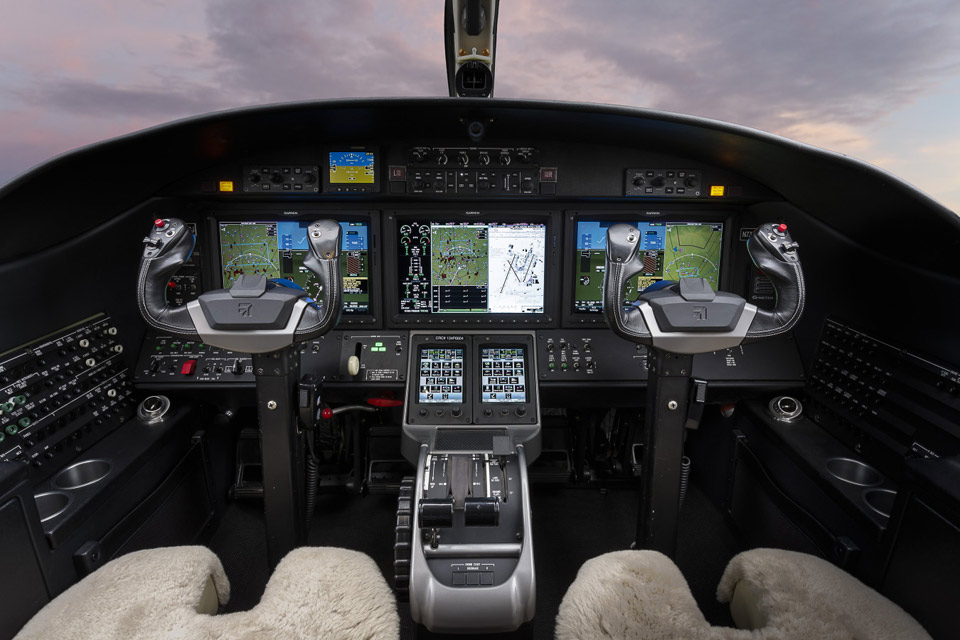
What about owners transitioning from non-Pro Line 21 airplanes? Many times, they hesitated to move to the CJ3 simply because of a lack of familiarity with Pro Line avionics. When Cessna announced the CJ3+ in March 2014, a smile crossed my face. This upgraded CJ3 will be equipped with Garmin’s most advanced flight deck, the G3000 touch-screen avionics suite. Now, pilots fluent in Garmin will no doubt give the CJ3+ a closer look. This demographic, which includes operators of G1000-equipped Embraer Phenom 100s, Piper Meridians, and Socata TBM 850/900s—as well as Cessna’s own G1000-equipped Mustangs and G3000-equipped Citation M2s—is nothing to sneeze at. Bottom line, the pathway to the CJ3+ has significantly widened to a much broader market.
It’s especially appealing to Cessna Mustang, Phenom 100, and TBM 850/900 owners who don’t feel that the Citation M2—the CJ3+’s little brother—has enough of a jump in performance and capability to make them want to make the move, nor do they want to spend the $10 million-plus for the G3000 Phenom 300. Those pilots won’t feel that way about the CJ3+.
Getting in. Cockpit ingress and egress in the CJ3 was and still is an area of frequent complaint by its operators. Cessna addressed those complaints in the CJ3+ by designing a notch in the inboard seat leg supports and moving the center console in slightly. The result? Getting in and out of the CJ3+ cockpit is significantly easier.
The cockpit also has been completely redesigned, from the new leather-wrapped yokes to the optimized switch layout. The switch count on the CJ3+ is significantly reduced, as many of the system functions have been integrated into the G3000 (pressurization, FADEC control, ignition control, air conditioning, lights, system test). Underneath each pilot armrest, Cessna added a “yoke-free” push-to-talk switch, similar to the PTT switches used in the Phenom 100/300 glareshield. There’s no need to lift one’s arm off a CJ3+ armrest when making a radio call while on autopilot. The addition of USB power ports in the cockpit allow for direct charging of your iPhone or iPad, or listening to XM music via the G3000 system.

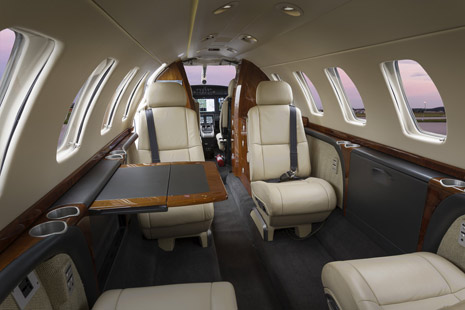
Garmin G3000. The beauty of the G3000 is that it requires little in the way of explanation to a new operator. Garmin took many cues from the human factors design team at Apple to design the Garmin Touch Controllers (GTC) that are principally used to drive the G3000 system. The graphical interface makes managing your cockpit as easy as managing your iPad. In the way that an iPad does not require a manual to operate, the G3000 feels very similar—it’s just intuitive and smart (see “Turbine Pilot: Leaping Forward,” March 2014 AOPA Pilot).
Electrical system. Much like the M2, the CJ3+ got a fairly impressive makeover of its electrical system. The addition of a second battery in the nose to power the G3000 system during all operations is one big improvement—it keeps all avionics powered during the start sequence, and increases the duration of emergency battery power in flight.
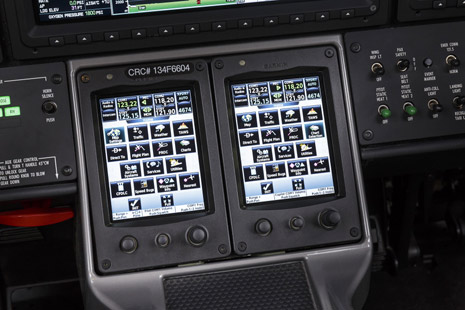
Start-up. With the newly designed cockpit, Cessna has made engine starting even easier. The start panel, which was located on the left-hand side of the CJ3 cockpit, has been moved to the center pedestal of the CJ3+. To start the engines, simply push the respective starter and move the thrust lever out of cutoff. No need to wait for 8-percent N2 to introduce fuel, like in the CJ3—simply move the thrust lever out of the cutoff detent immediately after engaging the starter. Total time to get both engines started is less than 90 seconds. With FADEC controlling the introduction of fuel, ignition, and all other engine functions, the engine-starting process is not much different than starting your car.
Taxi. Taxi characteristics of the CJ3+ are benign and easy to get used to. Taxiing is achieved with traditional nosewheel steering, combined with differential braking when needed. The antiskid braking system on the CJ3+ is well balanced and effective when a quick stop is needed, as we’ll soon see. With the availability of the large airport diagrams on the G3000’s 14.1-inch multifunction display and Garmin’s optional SurfaceWatch upgrade, single-pilot ground operations are easier and safer, especially at unfamiliar airports or at night. SurfaceWatch provides additional aural and visual annunciations for improved aircraft position awareness during taxi, takeoff, and landing operations.
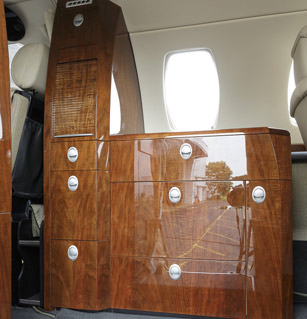
Takeoff. Our test flight of Cessna’s newest light jet was to be accomplished out of Austin-Bergstrom International Airport. To test the CJ3+’s climb capabilities, we coordinated with air traffic control to allow for an unrestricted climb from the Texas airport straight to FL450. Standing the thrust levers up to takeoff power, I started a timer. With 5,640 pounds of thrust from the pair of Williams International FJ44-3A engines, the CJ3+ quickly accelerated down the runway. With an ambient temperature of 19 degrees Celsius and a takeoff weight of 13,000 pounds, the CJ3+ broke ground approximately 1,800 feet down the runway and cleared a 50-foot obstacle in about 3,000 feet.
Climb. Upon retracting the landing gear, retracting the flaps, and setting a climb speed of 222 KIAS, our initial rate of climb was approximately 5,400 feet per minute. Passing through FL300, we were still climbing at 2,000 fpm with a climb speed of 170 KIAS.
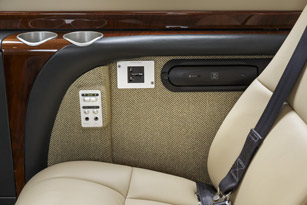
With temperatures varying from ISA plus 15 in the mid-teens to ISA at FL450, it took an incredibly short 23 minutes to get to FL450. On average the temperature during climb was ISA plus 6. It took only 12 minutes from power-up to FL350. One word can describe this sort of performance: Wow.
Cruise. Once at altitude, the CJ3+ took approximately three minutes to accelerate up to its MMO speed of Mach 0.737, which resulted in a true airspeed of 417 knots, burning 780 pounds of fuel per hour. With a maximum fuel capacity of 4,710 pounds, at maximum power the published range is 1,875 nm. With a moderate tailwind, the CJ3+ can make nonstop West-to-East-Coast crossings of the United States.
While at altitude, I spent some time with the CJ3+’s weather depiction capability. With the G3000, weather radar can be overlaid on a moving map, and XM weather can be displayed simultaneously. This can be on the split-screen PFD or the MFD. In addition, we can compare XM weather and weather radar side by side on the MFD, a nice feature when flying through or around convective weather.
While at altitude I also got to experiment with the CJ3+s fully integrated satellite phone, email, and SMS text services. All of these functions are controlled through the Garmin GTCs. Need to make a phone call? Simply pull up the phone page on the GTC, dial your number, and talk to your caller through your headset—simple as that. At FL450 both sound levels and cabin pressure are very comfortable. A headset is not required to speak to your co-pilot or passengers, and the 8.9-psid cabin gives a cabin pressure altitude of 7,800 feet at FL450 or a sea-level cabin at 23,586 feet.
One of the most useful operational capabilities of the CJ3+ is its ability to fly at FL450. While most light jets are limited to FL410, that last 4,000 feet makes a tremendous difference when it comes to reducing fuel burn, avoiding weather, climbing out of headwinds, and smoother rides.
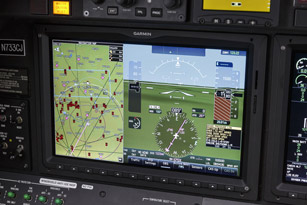
Airwork. After descending to 16,000 feet, it was time to experience the slow-speed characteristics of the CJ3+. Slowing below 200 knots, I extended the gear, flaps, and speed brakes. With the speed brakes extended, a slight rumble is felt throughout the cabin—a characteristic common on all model 525 Citations. Down at stall speed, I experienced the mechanical stick-shaker stall warning system. Flying deep into the stall regime, the CJ3+ handling characteristics were docile and easily manageable.
Landing. One of the most impressive features of the CJ3+ is its ability to stop on short runways. I wanted set to see how quickly I could get the CJ3+ stopped on Austin-Bergstrom’s slightly damp, 12,248-foot-long Runway 17L. I planted it on the 1,000-foot markers using a VREF of 102 knots, quickly lowered the nose, and lowered the flap control all the way down to the 55-degree ground flap position—all while firmly using maximum braking, to the point of activating the antiskid system. Pulling the ground flap lever not only further extends the flaps, it also simultaneously extends the speed brakes—and boy, do you feel them when they deploy. After coming to a complete stop, the total distance from touchdown to stopping was less than 1,200 feet. Add in the distance to clear a 50-foot obstacle on the approach, and I’m sure we more than beat the advertised landing distance of 3,200 feet.
Cabin experience. The CJ3+ comes standard with seating for nine: two pilot seats, six main cabin seats, and one belted potty. However, purchasers can opt for an additional sideways-facing seat located across from the door in place of the standard large galley.
Future owners are given several prepackaged interior combinations from which to choose, making the interior spec’ing process more like choosing a car interior, compared to the often complicated and time-consuming process of specifying each individual component.
In addition to a newly styled cabin interior, Cessna installed the new M2-style seats in the CJ3+, giving passengers additional articulating features and a more modern look. The fully enclosed lavatory, located in the aft cabin, gives passengers complete privacy and doubles as a certified seating area for all phases of flight. New cabin options include airborne wireless Internet, sat phones, Cessna’s Clarity cabin entertainment system, and Airshow in-flight information display.
Operating costs. With the availability of Cessna’s guaranteed-cost maintenance programs, operators can plan to the cent what it will cost to operate a new CJ3+. When factoring in reserves for parts, labor, and engine, the dry hourly operating cost for the CJ3+ ranges from $482 per hour in the first year to $604 per hour in the fifth year of operation (costs increase as warranty coverages expire between years one and five).
Assuming an average stage length of 300 nm, you can anticipate an average fuel burn of 125 gallons per hour. With an average fuel cost of $5/gallon, fuel totals approximately $625 per hour. This places total direct operating cost for the CJ3+ between $1,107 and $1,229 per hour. For this jet’s size and performance, that’s relatively inexpensive.
Final thoughts. While there are no aerodynamic or performance changes to the CJ3+ compared to its CJ3 predecessor, the cockpit has seen a significant makeover. With the addition of the Garmin G3000 and a new interior, the $8.475 million CJ3+ has reestablished itself as a serious contender at the top end of the single-pilot jet world.
That’s because the CJ3+ offers more performance per dollar compared to any other light jet out there. With a range of 1,875 nm at high-speed cruise (2,070 nm at long-range cruise), seating capacity for up to 10, maximum speeds in excess of 425 knots, miserly fuel flows at FL450, the reliability and predictability of a Citation—and, now the most advanced flight deck available in this category—the CJ3+ shows the makings of a continued winner.
Cyrus Sigari is the CEO of jetAVIVA, a reseller of light jets. He is an ATP-rated instructor pilot in the Citation CJ series, Citation Mustang, Eclipse 500, Phenom 100, and Boeing 747.
SPEC SHEET
Citation CJ3+
Typical equipped price: $8.475 million
Specifications
Powerplants | (2) Williams International FJ44-3A, 2,820 lbst ea
TBO | 4,000 hours
Length | 51 ft 2 in
Height | 15 ft 2 in
Wingspan | 53 ft 4 in
Wing area | 294 sq ft
Seats | 2+6/7
Basic operating weight | 8,580 lb
Max ramp weight | 14,070 lb
Max takeoff weight | 13,870 lb
Max zero fuel weight | 10,510 lb
Max useful load | 5,490 lb
Payload w/full fuel | 780 lb
Max landing weight | 12,750 lb
Fuel capacity | 703 gal (4,710 lb)
Baggage capacity, aft | 1,000 lb, 65 cu ft
Performance
Takeoff field length, SL @ 15 deg C/ 59 deg F | 3,130 ft
Max rate of climb, sea level | 4,478 fpm
Time to climb to 45,000 ft | 27 minutes
Single-engine ROC, sea level | 1,020 fpm
Max cruise speed/fuel consumption @ 33,000 ft | 416 kt/1,308 pph @ 45,000 ft | 387 kt/734 pph
Max range (+/- 4%) | 2,070 nm
Max operating altitude | 45,000 ft
Sea-level cabin to | 23,586 ft
Landing distance | 2,770 ft
Limiting and recommended airspeeds
VR (rotation) | 102 KIAS
V1 (takeoff decision speed) | 105 KIAS
V2 (takeoff safety speed) | 114 KIAS
VFE (max flap extended)
15 deg | 200 KIAS
35 deg | 160 KIAS
VLE (max gear extended) | 250 KIAS
VLO (max gear operating)
Extend | 200 KIAS
Retract | 200 KIAS
VREF (reference speed, final approach) | 107 KIAS
VMO (max operating speed) SL-8,000 ft | 260 KIAS 8,000-29,300 ft | 275 KIAS
MMO (max Mach number) | 0.737 M
VSO (stall, in landing configuration) | 86 KIAS
For more informationContact Cessna Aircraft Company, telephone 800-4-CESSNA, www.cessna.com/en/citation/cj3. All specifications are based on manufacturer’s calculations.
All performance figures are based on standard day, standard atmosphere, sea level, gross weight conditions unless otherwise noted.


